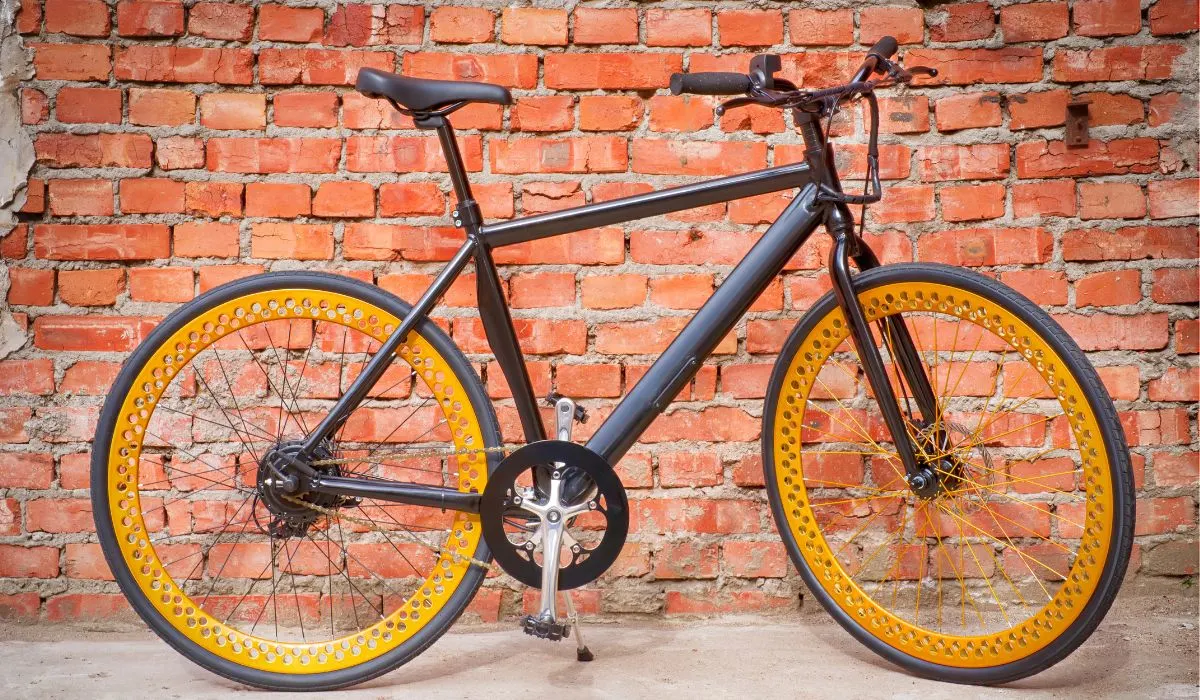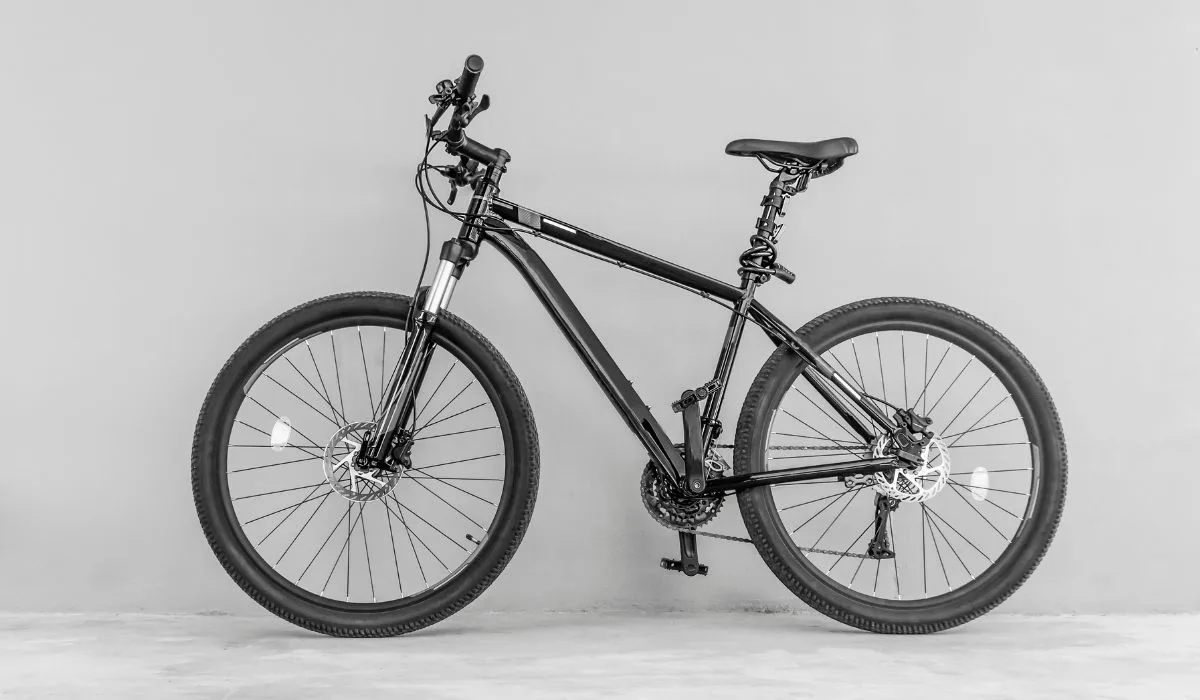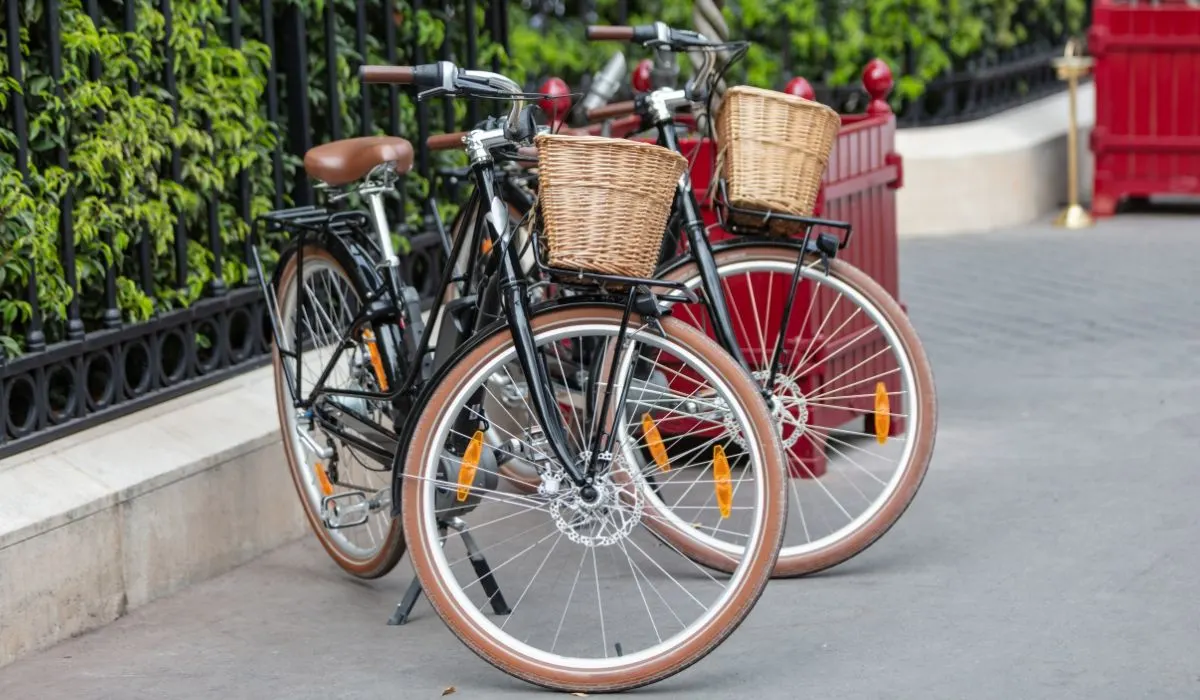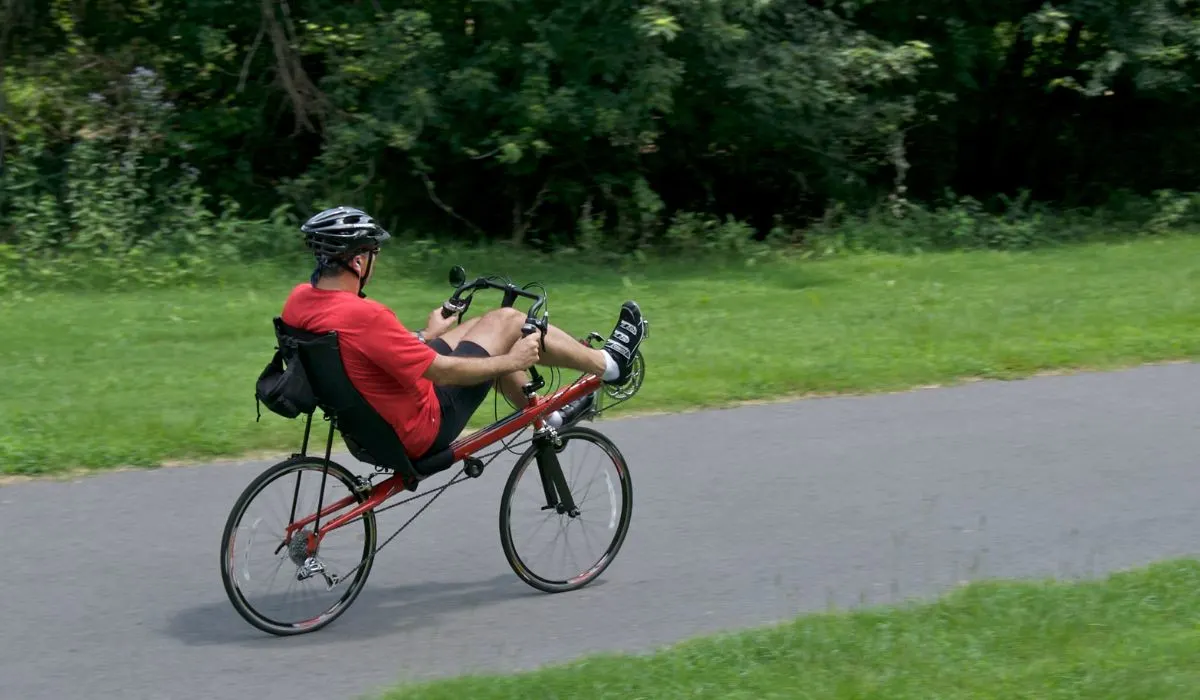
Bicycles have existed as a transportation method for around two centuries, and they have changed and evolved a lot in that time. Whereas the earliest forms of bicycles were crude and simplistic, nowadays, there are as many varieties of bikes as there are people to ride them. All this choice begs the question, what bike is the easiest to ride?
The easiest bike to ride depends partially on where you live. For primarily city riding, electric bicycles take a lot of the work out of pedaling, which can be convenient. However, they are less suited to rural environments with rugged terrain where mountain bikes reign supreme.
Understanding the best bike for you involves taking a closer look at the different varieties available. There is no single perfect bicycle for everyone’s needs, so reviewing the details of the various options available can help narrow it down.
Read on to learn more about all the varieties of bikes, and by the end, you will know which one will suit you perfectly.
Consider Your Needs
Before setting foot in a bike shop, there are several things to take into account about your life and lifestyle. Bicycles are not a one-size-fits-all kind of purchase. Take stock of how you plan to use your new bike before you can ascertain which one is the best option for you.
The following are some of the essential questions to ask yourself before buying a new bike.
- When was the last time you rode a bicycle? What did you like and dislike about that riding experience? Every person’s experience is individual and reviewing the pros and cons of your previous bike(s) will help shape your expectations for the next one.
- At this stage in your life, what is currently the most important thing to you? Some of the factors that different bike styles excel at are:
- speed
- comfort
- style
- ease of use
- convenient storage
- versatility
- Do you plan to ride with others, or primarily on solo excursions? If you do intend to ride with a group of friends or family members, it can be beneficial for everyone in the group to have the same kind of bike, so nobody is at a disadvantage during rides.
- Where do you live, and what kind of terrain will you encounter most often? This aspect includes the quality of the roads or trails and how hilly or flat the landscape is.
- How far is the riding area from where you live? Will you need to transport the bike before you can go riding, or can you hop on your bike right from the front door of your home?
- What kind of budget are you working within? Bicycles are one of those items that can vary from only a few hundred dollars up to tens of thousands. There is a considerable degree of variation within this margin. Depending on your needs, the higher end of that spectrum may be unnecessary.
- What kind of physical limitations do you need to take into account? Always remember that it is vital to buy based on your needs, and you can change or upgrade your bicycle options later on.
Not every consideration on this list will apply to every person. However, the more information you take into account before you plan your bicycle purchase, the better an experience you will have.
Types of Bicycles
With this list of your needs firmly in mind, now it’s time to take a deep dive into the incredible array of bikes that are available today.
As you read through the following bicycle styles, remember that these devices can have a great degree of customization available to them. However, customization often comes with a significantly higher price tag. Let’s begin!
Road Bikes
As you might be able to guess from the name, road bikes are designed to ride on paved roads, usually at very high speeds. These bikes are built with very lightweight frames and thin tires, all with the intention to give you maximum speed with minimal effort.
Road bikes can be easily identified by their dropped handlebars, which are the ones that loop downwards from the front of the bike and then curve backward.
The handlebar design, coupled with their advanced gearing, allows riders to bend into an aerodynamic and efficient riding position that contributes to gaining maximum speed.
Sometimes road bikes are referred to as endurance bikes, which allow for multi-mile rides. This is correct, thanks to their speed and efficient propulsion.
NOTE: While the forward-leaning riding position does allow for high speeds, it can be very uncomfortable for some riders.
The trade-off for lightweight frames and wheels is that they are relatively fragile compared to other bike styles and can easily be damaged by potholes or other adverse terrains.
Road bikes have a wide variety within their type, and you should also be aware that the ones that lean toward the racing end of the spectrum are usually incapable of carrying luggage.
Unless you intend to compete in races, pure road bikes are typically inefficient for general use. Keep in mind the different varieties when purchasing and always specify your needs when speaking with bike shop employees.
Pros:
- Very high top speeds.
- Efficient pedaling means you will be less tired over long distances.
- Fun bicycles for dedicated riding.
Cons:
- Fragile compared to other types of bikes.
- Casual riders may find the hunched riding style uncomfortable.

Mountain Bikes
Mountain bikes are likely very familiar to those who had bikes as children and haven’t ridden since. Thanks to their design and overall durability, these bikes are an excellent choice for kids or teenagers since they tend to last a while.
Mountain bike tires provide exceptional grip on almost any surface and are designed similarly to winter tires for cars. These bikes also offer powerful brakes that use the same disc-style brakes that cars and motorcycles use.
The more expensive versions will usually have suspension for both the front and rear wheels to allow the rider better control despite the rough terrain. The gearing that mountain bikes are equipped with is built to help navigate steep terrain and has a wide range of options to tackle any gradient imaginable.
Similar to how road bikes come in extreme racing varieties and more casual ones, mountain bikes don’t require you to scale cliffs to be useful. They can be an excellent option for leisurely riding thanks to their more relaxed position. For riding on gravel roads, these bikes can be a perfect choice.
The inclusion of suspension and powerful brakes means that while these bikes are phenomenal for purely off-road excursions, they are significantly heavier and energy inefficient than other bikes built for roads.
If you know you are going to spend most of your riding time on well-paved roads, then mountain bikes are probably not the best option for you.
Pros:
- The upright riding position can be more comfortable for some.
- Durable construction.
- Excellent brakes.
- Versatile and capable of riding on any terrain.
Cons:
- Significantly heavier than other bike styles.
- Slow and inefficient on paved surfaces.
Hybrid Bikes
In broadest terms, a hybrid bike is the halfway mark between a road bike and a mountain bike. These bikes are characterized by combining the comfortable upright riding position of a mountain bike with a lighter frame and more efficient road bike wheels.
If you find yourself intrigued by the efficiency of road bikes, but don’t want to contort your body into a hunched over riding position, a hybrid bike might be the perfect combination for you.
NOTE: While an upright riding position is undoubtedly less aerodynamic, it allows you to see further ahead and around you, which is extremely helpful in urban environments.
This combination of features is what makes hybrid bikes a prevalent choice for commuters. They often come equipped with a wide variety of mounting choices that allow for luggage and other cargo options, helping with their popularity in that market.
Hybrid bikes live up to their name by providing the best of both worlds, with many quality of life features that make them perfect for casual riders.
Pros:
- Reasonably quick and efficient pedaling.
- Versatile and capable of handling more adverse terrain.
- A comfortable upright riding position.
Cons:
- Slightly heavier than road bikes and not as fast.
- Not as capable on rugged terrain as mountain bikes.
Touring Bikes
If hybrid bikes are the middle ground between road bikes and mountain bikes that lean towards their road counterparts, commuter bikes are the halfway point that leans toward the mountain version.
As their name would suggest, these bikes can accommodate everything from a daily commute to a cross-country excursion thanks to their fast-rotating wheels combined with thicker tires that handle mixed terrain well.
As with every kind of bike on this list, there are more extreme versions that are designed to carry heavy loads while maintaining a comfortable ride. These varieties also come with an equally impressive price tag, but if you plan on long-distance or endurance riding, these touring options can make for a great choice.
For bicyclists looking for a versatile bike that will let them traverse a mountain pass and navigate back roads to get to work at the same time, while loaded with all the equipment a person could need, a touring bike may be the best option.
Pros:
- Durable construction.
- Significant carrying capacity.
- Reasonably quick.
Cons:
- Not as fast or efficient as road bikes for exclusively paved road travel.

Backpacking / Gravel / Adventure / All-Road Bikes
You may find these bikes under a variety of names, including:
- backpacking bikes
- all-road bikes
- gravel bikes
- adventure bikes
Regardless of what you like to call them, these bikes have become increasingly popular in recent years, thanks to the perfect middle ground they occupy.
Adventure bikes manage to combine the appearance and speed of road bikes with a lot of clearance that allows them to use the thicker mountain biking tires. This gives them the freedom to be used on virtually any terrain imaginable.
In terms of customization, very few other bikes can match the freedom that gravel bikes provide. They can be constructed from materials ranging from steel and aluminum all the way up to carbon fiber and titanium.
Though their price varies spectacularly to match, they can come with attachment capabilities that allow their owners to improve the:
- braking
- mud-spatter protection
- carrying capacity
One great benefit of these all-road bikes is that they are perfect choices for riding on snow and ice-covered roads, which may be necessary if you live in a more wintery climate.
It is worth being aware that these bikes are also very fashionable and can demand a higher price for similar functionality to touring bikes. They are often a prime target for thievery.
Backpacking bikes are a perfect blend of many other bicycle styles while still maintaining their own unique identity.
Pros:
- Quick and efficient riding.
- Comfortable and practical for a variety of uses.
Cons:
- They can be heavy depending on the configuration.
- Often expensive thanks to their popularity.
Cyclocross Bikes
At first glance, cyclocross bikes are virtually indistinguishable from the bike styles above, but they are carefully engineered to work specifically for their namesake racing sport.
In terms of features, they have thick tires and usually disc brakes as you would find on higher-end mountain bikes, but they also include dropped handlebars like road bikes.
They are less comfortable than gravel and adventure bikes thanks to their more race-oriented design, and they are not built for long riding days.
NOTE: Generally speaking, you should only consider these bikes if you are a cyclocross rider, as they are not designed with versatility in mind.
Pros:
- Very fast.
- Dedicated design for cyclocross racers.
Cons:
- Poor choice for casual riders.
- Less versatile than gravel or adventure bikes.
Singlespeed / Fixed Gear Bike
If you value simplicity above everything else, fixed-gear bicycles are perhaps the best option available. These bicycles are trendy in cities, and while they are a straightforward design, they can be a bit tricky if you are not familiar with how they work.
Essentially, a proper singlespeed bike has no freewheel mechanism, which means that the pedals are always moving if you are moving.
While that may be off-putting to those unfamiliar with their design, fixed-gear bicycles bring a tremendous amount of control once you become familiar with them. They can be very fast in a skilled rider’s hands, and their mechanical simplicity means that they require very minimal maintenance.
These bicycles can be perfect for commuters who are confident in their abilities and are willing to put up with the difficulty of operation in hilly environments.
Fixed-gear bikes are a big commitment for casual cyclists, but if you can become comfortable using them, they are one of the best bikes for commuting thanks to their reliability. A simple design means that almost nothing can go wrong through everyday use.
Pros:
- Lightweight design.
- Very fast on flat terrain.
- Simple mechanics for easy maintenance.
Cons:
- Requires familiarity to use, best to test ride a lot before buying.
- Hard to use on hilly terrain.

City Bikes
These bicycles are one of the most visually identifiable thanks to their curved design and wide seat. City bikes are often referred to as Dutch-style bikes thanks to their origin and excellence on flat terrain that Holland is renowned for. These bikes are:
- very practical
- durable
- excellent for short-range rides in level towns and cities
Most city bikes come equipped with chainguards and flat pedals that allow their riders to hop on without worrying about specific bicycling clothes. Also, they include a few quality-of-life features that are uniquely designed for city use, including a self-powered front light and a built-in locking system.
These features make them an excellent option for just purchasing and going as you won’t need to buy very many (if any) accessories.
In terms of usage, these bikes can handle rough pavement, and the upright riding position is comfortable and gives a good view of traffic.
NOTE: While these bikes are very cozy, they don’t provide a very efficient riding experience, and larger hills can be challenging.
Pros:
- Fashionable and stylish design.
- A relaxed and comfortable riding position.
- Practical for everyday use in regular clothes.
- Durable construction.
Cons:
- Heavy and slow, these bikes are built for comfort, not speed.
Electric Bikes
This category is a bit more open-ended as electric bikes vary incredibly depending on their make and model. The unifying theme among this category is that they provide a powerful electric motor that can help commuters get to work without being too sweaty or those in less excellent shape who might want some assistance.
One of the most significant considerations when looking at electric bikes is the laws of your country. Depending on the electric motor’s strength, some of these bikes end up being classified as mopeds or motorbikes and can carry additional insurance and legal requirements.
TIP: Ensure that you review your country’s laws before purchasing one of these bikes, as they are expensive, to begin with, and additional requirements can elevate that cost significantly.
Most electric bikes are designed with comfort and ease of use in mind. While these bikes can be an excellent choice for commuters who just need a little bit of assistance getting where they’re going, they can also be much heavier than traditional bikes with the inclusion of:
- luggage space
- mudguards
- flat bars
- the motor
More so than most of the other bikes on this list, inquire with your local bike shop about what varieties of electric bikes they have available.
As technology and trends move forward, so does the design of these bikes. An example is electric mountain bikes, which allow riders access to the sport who may have considered themselves unable to without assistance.
Pros:
- Easy to ride.
- Very comfortable.
- Fun and advantageous for people with limited physical abilities.
Cons:
- Requires regular recharging:
- Heavier and far more expensive than standard bikes with similar features.
Folding Bikes
This style of bike fulfills a particular niche with impressive style and effectiveness. Folding bikes are built with short rides in mind, especially ones with minimal storage space at either end of the voyage.
Most of these bikes can be folded small enough to fit under a desk and can be carried easily on a bus or train. As such, they are utilized almost exclusively by commuters in large urban centers.
It is worth noting that these bikes do not ride like traditional bikes because of the compromises made to enable their portability. Notably, they have tiny wheels, which means that you will feel every bump and pothole in the road very keenly throughout your ride.
However, modern folding bikes are surprisingly effective at traversing cityscapes through various kinds of weather and road conditions.
Pros:
- Extremely convenient storage option.
- Small enough to fit on public transportation.
- Small wheels provide quick acceleration, which helps in city traffic.
Cons:
- Can be heavier and slower than traditional bikes.
- Not as stable as conventional bikes.

Recumbent Bikes
In terms of uniqueness, very few other bicycles can come close to the recumbent bike. These bikes are designed to be extremely comfortable and supportive of your back while riding.
Recumbent bikes come in so many different styles and sub-categories that they can fill an entire article independently, but certain commonalities between them are worthy of note here.
All recumbent bikes are built with an ergonomic design that puts less stress on the body, especially your:
- neck
- back
- hands
- arms
- wrists
- posterior
These bikes provide a lower center of gravity, which helps provide stability. On individual styles, you can actually put your feet flat on the pavement when you need to.
The most significant disadvantage of a recumbent bike is its price, though it also weighs significantly more and can be challenging to use on hills.
If you suffer from a physical ailment that means you cannot use a traditional bike comfortably or safely, a recumbent bike might be the best option to allow you access to this fantastic method of travel and exercise.
Pros:
- Ergonomic support for the rider.
- Massively variable designs that can suit any person’s needs.
Cons:
- Expensive.
- The considerable number of variations means finding the right one can be a long process.
- Heavy and large design requires a bigger storage space.
The Bottom Line
In terms of overall ease of use, today’s electric bicycles are one of the most excellent choices available. Especially for older or less physically fit riders, having an electric motor’s assistance can help traverse hills and other obstacles that may prevent these riders from enjoying their journey.
In a similar vein, recumbent bicycles have evolved enormously over the past several years and can be the best option for riders with physical issues that make traditionally designed bikes inaccessible.
The biggest hurdle for both of these bike styles is their cost. Both electric and recumbent bikes have hefty price tags for even their most basic models, and they scale up considerably with additional accessories and attachments.
If you cannot ride comfortably or safely with any conventional bike style, and one of these options will make the difference to allow you to travel and exercise, it may be worth saving up to afford one.
Always check with your local shop to see if they have financing options available, as many stores will do their best to accommodate their customers’ needs.
Riding Into The Sunset
At this point in the article, if you have kept your list of needs firmly in mind as you read through our list of bicycle variations, you should have some idea of what bike will be perfect for your needs.
No one bike is the easiest to ride as every person has different needs and lives in various parts of the world. However, a bicycle design exists that is perfect for each individual, and it just becomes a matter of taking the time and effort to research your options.
Keep this list accessible as you go bike shopping and refer back to it to determine what questions you have for your local bike shop staff. Remember that even within the categories listed above, there is room for immense variation and customization. Keep your needs and your habits close at hand, and you will undoubtedly find the perfect bike for you.
You might also be interested in:
